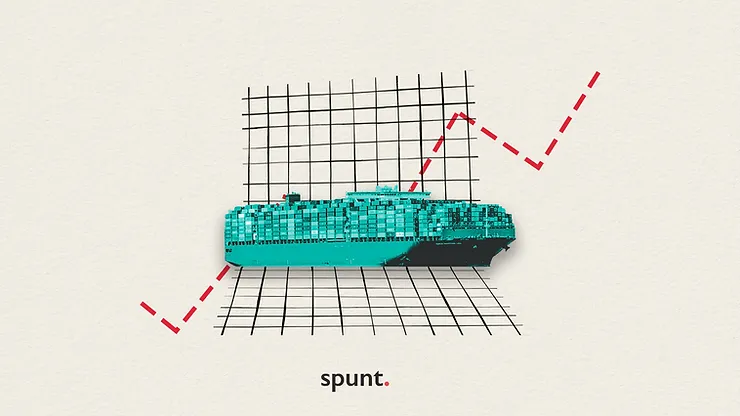Increasing prices. Long shipping delays. Out-of-stock products. A nightmare of supply chain issues. You may or may not be aware, but there’s an ongoing global logistical nightmare – the effects of which have been felt even in tiny Malta.
Since 2018, political bickering between the US and China has resulted in massive volatility in supply of all sorts of products – from agricultural products to cars to microchips used in all kinds of electronic components. Demand boomed as businesses, both Chinese and American, rushed to replenish their stocks ahead of sanctions coming into effect in phases between 2018 and 2020.
Enter Covid-19.
Entire populations were put into lockdown, ports were closed, factories remained devoid of workers. The global economy tanked in the first half of 2020. As the number of active cases went down, massive fiscal incentives were put into motion by world governments, and consumer demand boomed. The SP-500 roared to an all-time high, even beating pre-Covid levels.
Yet, any chain is as strong as its weakest link. And signs of weaknesses began to show all along the chain.
At the onset of the pandemic, shipping companies cut down the number of cargo ships that were being sent out. This not only stopped the usual flow of imported and exported goods, but also saw empty containers not being collected. While enough shipping containers exist to cater for global demand, empty containers were spread around understaffed ports and closed inland depots in different parts of the world. This resulted in massive global trade delays. The Suez Canal blockage in March and a shutdown of a key terminal at the world’s third-busiest cargo port in China in May and June, compounded the problem. In the meantime, as governments eased lockdowns, consumer demand rebounded like never before.
As importers clamoured for shipping containers, prices shot up. In October 2020, a 40-foot cargo container from Shanghai to Genoa would have set you back just over $2,300. 12 months later, the same shipment cost over $13,000. There’s the small matter that Genoa is the port which most imports bound for Malta pass through, so you can see why these price increases are particularly pertinent. And I hear you – why not switch to air cargo? The reasons why this is not the solution are twofold: (A) most airfreight is carried in the cargo holds of passenger jets and with international air travel severely constrained, so are available cargo slots and (B) more importantly, airfreight is 8 times as costly as shipping.
So shipping is the only practical solution. Another problem is there are simply not enough container ships to go around. Many new ships are being constructed – close to 20% of the global fleet in operation. But most of these ships will not be operable until 2023.
Worse still, most ships are double or even triple the size of the average container ship in the 2000s, resulting in newer challenges to port infrastructure, which had already come under increased strain due to increased shipping activity. Port congestion has become a global phenomenon, with shipping containers seen queuing outside ports in literal traffic jams outside harbours.
Then there’s the issue of the Italian Green Pass. Introduced in June, even before the EU-mandated Covid certificate, the Green Pass originally offered a way to identify individuals who have been vaccinated and should therefore be allowed to attend mass events without needing a negative PCR test. However, the Italian government gradually increased the mandate of the Green Pass such that by 15 October 2021, the Green Pass was made mandatory for all workers in the public and private sectors. This was met with massive opposition across the country. How is this relevant to the supply chain? Well, trade unions led the resistance to the decree, and port workers in Trieste and Genoa voiced their protest by blocking port operations, forcing the Italian government back to the negotiating table. Yes, the same port in Genoa from which a great number of shipping containers pass through on their way to Malta.
Once the shipment finally arrives at the intended destination, truckers are needed to get the goods to their final destination. But even here, the supply chain has seen cracks, with a truck driver shortage not going away, having lingered throughout Europe for the past couple of years. Poor wages have led to a shortage of 400,000 truck drivers across the continent, according to consultancy firm Transport Intelligence.
These ingredients put together have simmered into the supply chain nightmare we are currently going through. While the global economy has so far weathered the storm, the situation can become untenable if it continues in the long-run, with persistent inflation concerns at the back of everyone’s mind. Yet, supply chain problems can only go away gradually, as the global economy shakes off the hangover effects of US-China tensions, Covid-19 and all the chaos that ensued. Ultimately, though, it is booming consumer demand that is putting the supply chain under strain and the longer the latter takes to sort itself out, the more attention is diverted toward the former. And what better way to prevent the global economy from spiralling into hyperinflation than a good old interest rate hike?


Leave a Reply